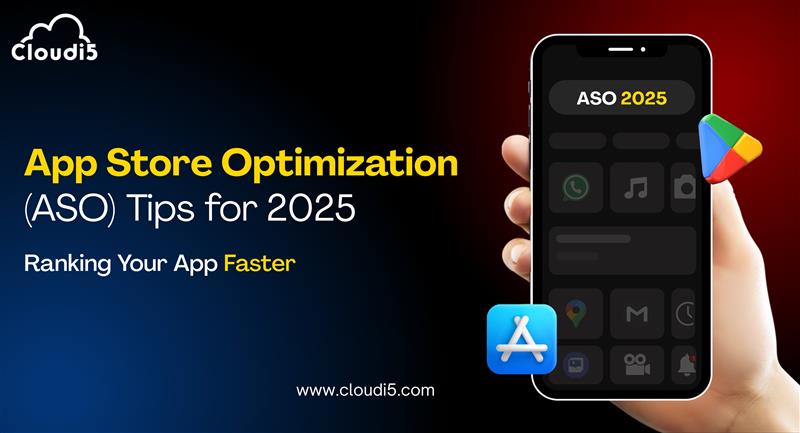
Voice Optimize Your Brand In Ways You Never Imagined
Imagine this: You're in the middle of making a lavish meal, your hands covered in flour. That's when you discover you're missing a key ingredient. You can't reach for your phone, but that's fine because you can simply say, "Hey Siri, where can I buy chocolate syrup nearby?" Within seconds, you can hear the list of shops within your vicinity.
But what does this mean for your brand? In this blog, we'll learn more about Voice search optimization in digital marketing and how to do it in a step by step guide.
What is voice optimization?
Voice search optimization or voice search marketing, is about making sure your website and content work well with voice-activated devices like Siri , Google or Alexa. These devices understand and answer spoken questions. So, voice optimization means setting up your brand to be easily found when people talk to their devices.
"Hey Siri, tell me a joke."
"Alexa, what's the weather today?"
"OK Google, where's the nearest coffee shop?"
The point is, we're living in an age where we don't have to type out our questions anymore; we can just ask them aloud. It's the dawn of the voice search era, my friends! This isn't just a passing trend; it's a massive shift in how we engage with technology nowadays.
To do this, you need to think about how people talk and ask questions when using voice search. It's a bit different from typing into a search bar. You also need to use the right words and phrases, make sure your website is easy to use on phones, and provide clear and helpful information.
Now, you might be wondering, "How can this voice search help my brand SEO?" Well, hang tight, because we're about to see the benefits of voice search optimization!
Why optimize for voice search?
Voice search isn't a futuristic dream—it's here, and it's booming.
According to Statista, there are 4.2 billion digital voice assistants worldwide in 2023. This number is expected to reach 8.4 billion by 2024. That's a huge user base your brand can't afford to ignore.
- Improved User Experience: Imagine a potential customer lands on your website and can simply ask, "Tell me more about your products." Voice search optimization enables your site to provide immediate, conversational responses, enhancing the user experience.
- Local Search Dominance: "Find the best pizza place near me." If your brand has a physical presence, optimizing for voice search can put you at the top of the list when users seek nearby services or products. This can significantly boost foot traffic and sales.
- Increased Website Traffic: Voice searches often result in longer, more specific queries. Optimizing for these long-tail keywords can draw in potential buyers. As a result, you'll see a rise in organic website traffic.
- Building Brand Authority: When your brand consistently provides accurate and valuable voice search responses, it positions you as an authority in your niche. Users trust brands that offer helpful information through voice search.
- Staying Ahead: Early adopters of voice search optimization have a competitive edge. As voice search continues to grow, brands that have fine-tuned their strategy will be the first to reap the rewards.
Voice optimization is essential because more and more people are using voice-activated devices to find what they need online. By making your website and content voice-friendly, you can reach more people and give them a better experience when they talk to their devices.
How to Optimize for Voice Search
Now that you're convinced of the benefits, let's explore the Step-by-Step Guide to Voice Search Optimization for Your Business:
1. Understand Voice Search: grasp the concept of voice search, natural language queries, its growing impact on consumer behavior, and its implications for your business.
2. Perform Keyword Research: Start with traditional keyword research to identify the phrases and questions users may ask via voice search. Consider using tools like Google's Keyword Planner, Answer the Public, or SEMrush to find voice search-friendly keywords. Focus on long-tail keywords that mimic conversational language.
3. Create Conversational Content: Develop content that answers specific questions and addresses the needs of your audience. Craft informative blog posts, FAQs, and how-to guides that use natural language and provide comprehensive answers.
4. Optimize for Featured Snippets: Create content that is structured to be selected as a featured snippet. Voice assistants often pull answers from these snippets.
5. Local SEO Optimization: If your business has a physical location, ensure your Google My Business listing is accurate and up-to-date. Use local SEO techniques to optimize for "near me" queries and location-specific searches.
6. Mobile Optimization: Most people use mobile phones for voice search rather than desktops. Test your website's mobile voice search functionality to ensure it delivers a seamless experience.
7. Use Schema Markup: Make use of schema markup on your website to assist search engines in better understanding your content. This improves your chances of appearing in voice search results.
8. Build an FAQ Section: Create an FAQ section on your website that answers common customer queries using natural language. Voice assistants often pull answers from FAQ sections.
9. Focus on Page Speed: Speed matters in voice search. Compress images, leverage browser caching, and use a content delivery network (CDN) to improve website load times.
10. Secure Your Website: Ensure your website is secure with HTTPS. Voice search results often prioritize secure websites.
11. Test Voice Search Queries: Perform voice searches using various devices and virtual assistants to see how your content ranks. Analyze the featured snippets and sources that appear for different queries related to your industry.
12. Monitor and Analyze Performance: Track your website's performance in voice search using tools like Google Analytics and Google Search Console. Stays updated with the latest voice search trends and adjust your strategy accordingly.
13. Adapt and Optimize Continuously: The digital landscape is constantly evolving. Stays updated with voice search trends and adapt your optimization strategy accordingly.
14. Consider Voice Search Advertising: Explore voice search advertising options on platforms like Amazon Alexa and Google Assistant to reach a wider audience.
15. Voice Search on Social Media: Optimize your social media profiles for voice search by providing complete and accurate information about your business.
16. Leverage Voice Search Tools: Explore voice search optimization tools and software that can help streamline your efforts and track your progress.
17. Seek Professional Help: If you find voice search optimization challenging or time-consuming, consider hiring a professional digital marketing agency with expertise in this area.
18. Online Reviews: Encourage and manage online reviews, as they can influence local search rankings.
By following these step-by-step guidelines, your business can effectively optimize for voice search and stay competitive. However, keep in mind that voice search optimization is an ongoing process, so being up-to-date with the newest discoveries in speech technology and search algorithms is critical for long-term success.
Real-Life Examples of Voice Search Success
Here are some real-life Voice search optimization examples of businesses that have achieved success through voice search optimization:
Domino's Pizza:
Domino's has embraced voice search by allowing customers to place pizza orders through voice-activated apps. Customers can simply say, "Hey Alexa, order me a pepperoni pizza," and their order is on its way. This innovation has not only streamlined the ordering process but also boosted sales significantly.
BBC Good Food:
BBC Good Food, a popular culinary website, has taken advantage of voice search by providing voice-activated recipes. Users can ask their voice assistants for cooking instructions, and BBC Good Food guides them through the recipe, step by step, hands-free. This approach has made cooking easier and more enjoyable for users.
The Home Depot:
The Home Depot has optimized its website and product listings for voice search. Customers can inquire about product availability, pricing and even ask for DIY project advice using voice commands. This approach enhances the shopping experience, especially for customers tackling home improvement projects.
Lyft and Uber:
Ridesharing platforms like Lyft and Uber have integrated with voice assistants, allowing users to book rides with voice commands. Commuters can simply say, "Hey Siri, request a Lyft to the airport," making transportation bookings hassle-free.
Pandora and Spotify
Music streaming services like Pandora and Spotify have integrated voice search capabilities. Users can request songs, playlists, or artists by voice, creating a hands-free and enjoyable music-listening experience.
Conclusion:
Voice search is evolving rapidly, and its influence will only grow stronger. So, whether you're a local business or a global player, don't miss the boat. Be the answer to your customers' questions, and ride the wave of success.
Trusted By












Leave Comments